15 Interesting Facts about Gandhi
Just about everyone knows the name Mohandas Gandhi and some may only know him
as Gandhi, but there is no denying that he was truly a great historical figure. With so many
things that Gandhi accomplished throughout his life, it is hard to remember all
of his accomplishments off the top of ones head. Those living in India tend to know a little more about his life and
acts, but everyone in the world should know more about what he did for
the people of India. There always seems to be something new you can learn about
this particularly interesting and historic figure.
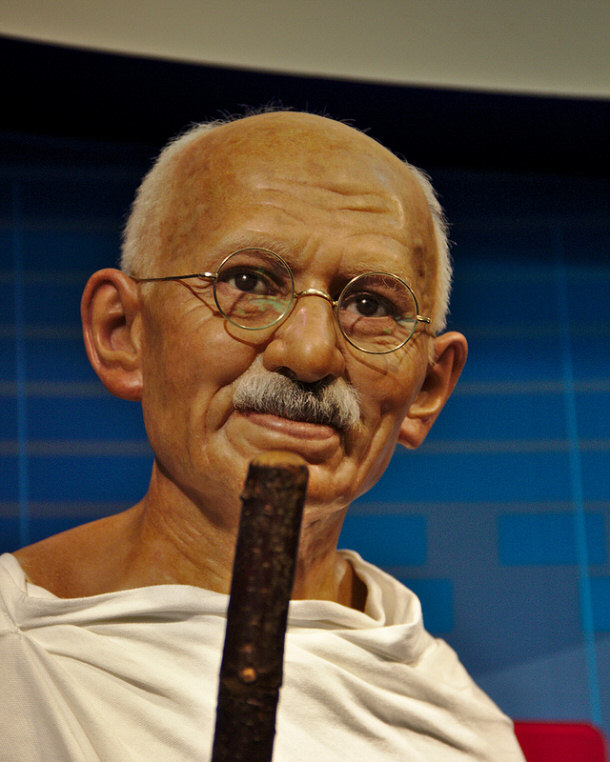
Here are fifteen interesting facts about Gandhi you may not have not already
known from history class.
15) No Relation between Two Gandhis
There has been some confusion over the years with people thinking that
Mohandas Gandhi was related to Indira Gandhi.
Gandhi and Young Indira
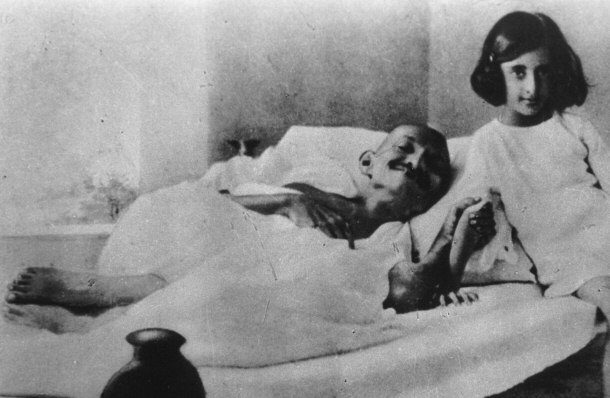
In fact, there was no relationship between Mohandas Gandhi and Indira who was prime minister of India from 1966-1977 and
1980-1984. Immediately after gaining its independence, Jawaharlal Nehru took the
seat of prime minister. He served from 1947-1964. His daughter succeeded him in the position, but Indira's
last name was also Gandhi.
Indira Gandhi (left) and Jacqueline Kennedy
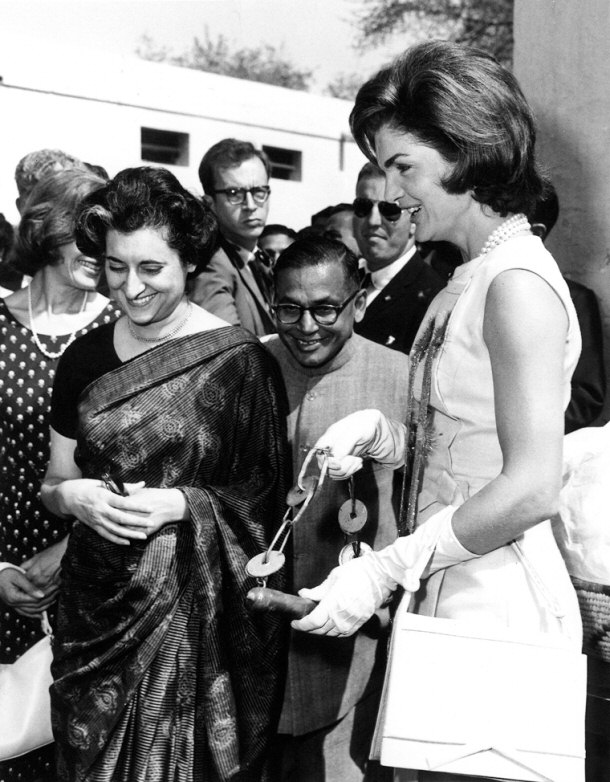
As an interesting twist, the entire Gandhi political family was victim to
assassination plots. Indira was assassinated by her Sikh bodyguards. It was
after her time in office that her son Rajiv served as the prime minister of
India. He succeeded Indira in office immediately after her death and served as
India's prime minister until 1989. While he was not killed in office, but he too was the victim of
an assassination plot. He was killed in a suicide bombing that a Sri
Lankan terrorist organization claimed responsibility for.
Rajiv Gandhi
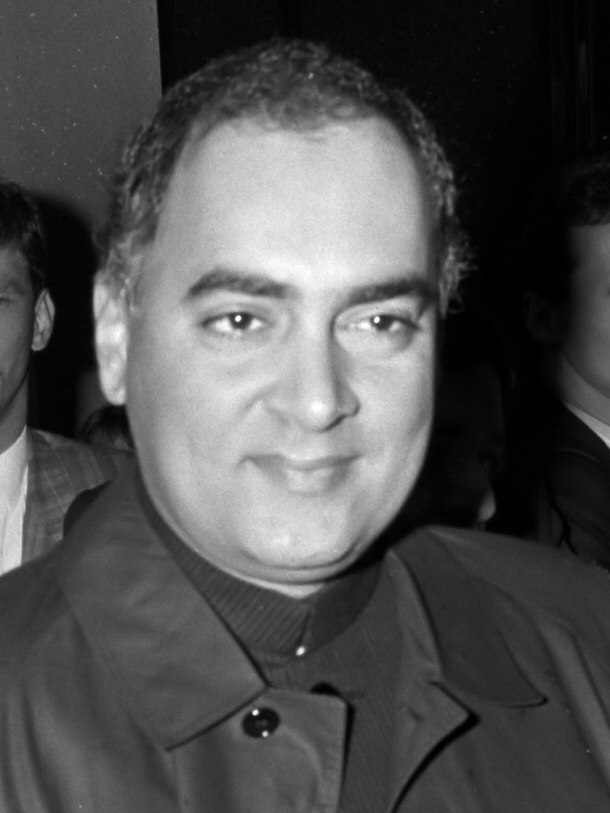
By Bart Molendijk / Anefo (Nationaal Archief),
via Wikimedia Commons
While the future will only say what will truly happen to the remaining Indian
politicians with Gandhi as a last name, it is expected that 2014
will be the year that Rahul, Rajiv Gandhi’s son, will take the seat of prime
minister. Rahul attended Harvard University and Florida’s Rollins College.
Rahul Gandhi (right) and Prime Minister of Greece George Papandreou
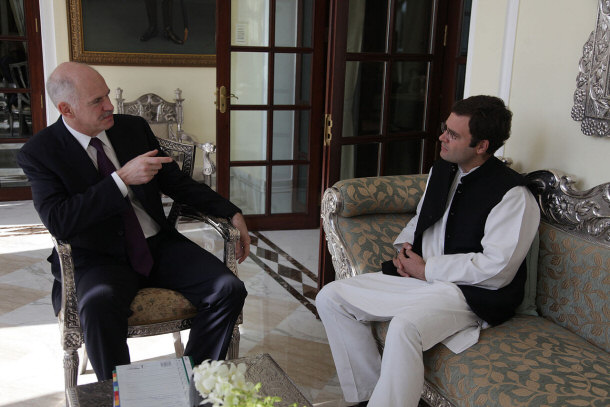
By Office of the Prime Minister of Greece,
via Wikimedia Commons
It is
hoped he will continue the dynasty as prime minister, but have the fortune to
avoid any assassination attempts that his family has been plagued with for
generations.
14) Gandhi Was Very Shy
Everyone knows Gandhi as the strong activist willing to be the voice of an
entire nation who stood up to the British government in order to gain
independence for India. What you may not know was the crippling shyness his
early life was plagued with. Gandhi was not what you would consider a natural born leader.
There is one account, according to History.com, of Gandhi running home
from school because he did not want to talk to the other students. This is not
what you would expect from the man named as the ‘Man of the Year’ by Time
Magazine, and who was featured in the late 1990s ad campaign for Apple’s “Think
Differently”.
Even in school, Gandhi was not considered one of the best students. He was
always in the middle of the class. This was attributed more to his extreme
shyness than to his intelligence. He was able to eventually overcome it enough
to move on to attend University College London. He graduated with a law degree
and was ready to
practice law.
Lord Pethick-Lawrence and Gandhi in 1946
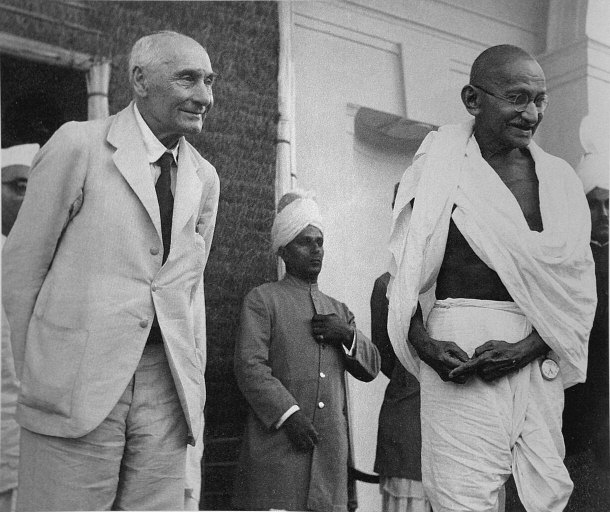
Simply getting through college was not enough to cure Gandhi’s shyness. In
fact, there is one account of his first trial experience where Gandhi’s knees
actually started shaking so badly he had to sit down and admit defeat. This shyness likely
did not go away when he was fighting for the independence of India, which points
to his conviction to free his people.
13) Man of Peace Not a Nobel Peace Prize Winner
It is hard to imagine anyone in history more qualified for receiving the Nobel
Peace Prize than Gandhi. While it is true that he was never bestowed with the
honor, it does not mean that he was not recognized by the committee or even
nominated for the award. In fact, Gandhi was nominated several times. The
committee put his name up for consideration in 1937, 1938, 1939, 1947, and even
in 1948. The committee never said whether he would have received the award had
he not been
assassinated.
Nehru and Gandhi in 1947 - One of the Last Photographs
Before Gandhi's Assassination
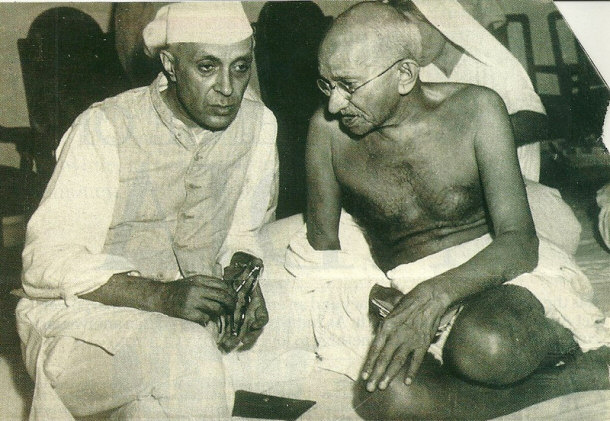
What we do know is that the committee did not feel it was a good idea to
award Gandhi posthumously. They instead gave no awards that year stating that
“no suitable living candidate” had presented themselves. In retrospect, the
committee announced in 2006 that they regretted never giving Gandhi the prize.
In an effort to posthumously recognize Gandhi and his lack of winning the Nobel
Peace Prize, both Martin Luther King Jr. and the 14th Dalai Lama mentioned
Gandhi in their acceptance speeches. The Dalai Lama even went as far as to
recognize Mahatma Gandhi as his mentor. It is an unbelievable honor for someone
who was never awarded the honor of the prize themselves to be mentioned by two
other Nobel Peace Prize winners.
12) Fellow Hindu Murdered Gandhi
|
Nathuram Godse:
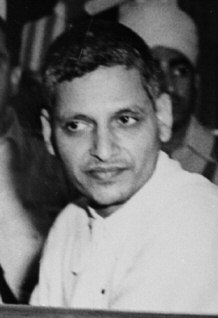
|
Gandhi stood in opposition to anything that would separate the people of
India. A misunderstanding of his intentions ultimately led to his death by the
hands of a fellow Hindu. Hindu nationalist Nathuram Godse was very sensitive to
the plight of India, and followed everything in the national and international
media with great intent. He was enraged when Gandhi spoke out against the
bloodshed between the Hindus and Muslims over a partition created by the British
government to create religious states for each religion (India and Pakistan).
What Godse did not know was that Gandhi had actually expressed his opposition
for any partition. He is quoted as saying “Partition is bad. But whatever is
past is past. We have only to look to the future.” Unfortunately for Gandhi,
this was either never heard by Godse, or Godse did not care, and viewed Gandhi
as pandering to Muslims. As a result, Gandhi was shot at close range three
times.
Birla House Where Gandhi was Assassinated in Delhi
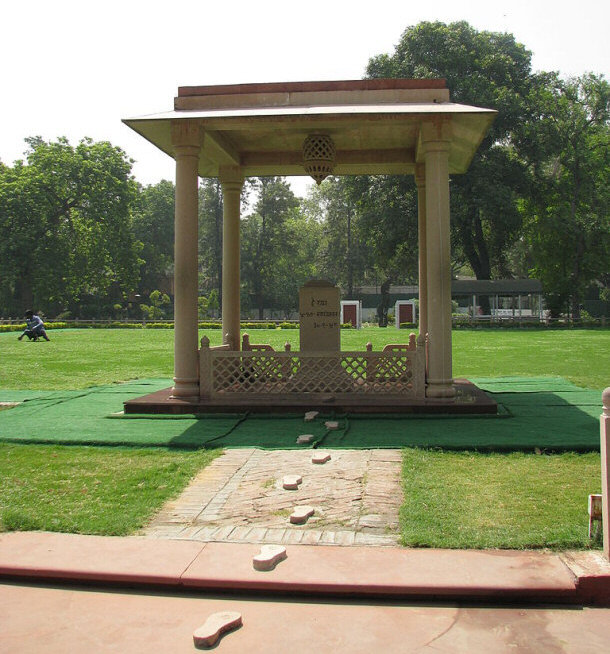
By Wilson Loo Kok Wee,
via Wikimedia Commons
Godse was quickly arrested along with a co-conspirator and a separatist group
who helped orchestrate the plot. The separatist group received prison sentences while Godse
and his co-conspirator were hanged for murdering Gandhi. The states of India and
Pakistan remain
separated to this day.
11) Gandhi Started Being an Activist in South Africa
India is the country most people associate Gandhi with, but it may come as a
surprise to know that he actually started his activism in South Africa. This was
a result of Gandhi encountering difficulty finding employment as a lawyer in his
homeland and looking else ware for employment opportunities. An Indian law firm
in South Africa gave him a one-year legal contract to work in South Africa and
with it Gandhi had the opportunity to begin his legal career. While in South Africa, Gandhi was
treated poorly and witnessed other Indians being treated badly by the British
and Boer (Dutch) governments who ruled South Africa at the time.
Gandhi Working as a Lawyer in South Africa in 1906
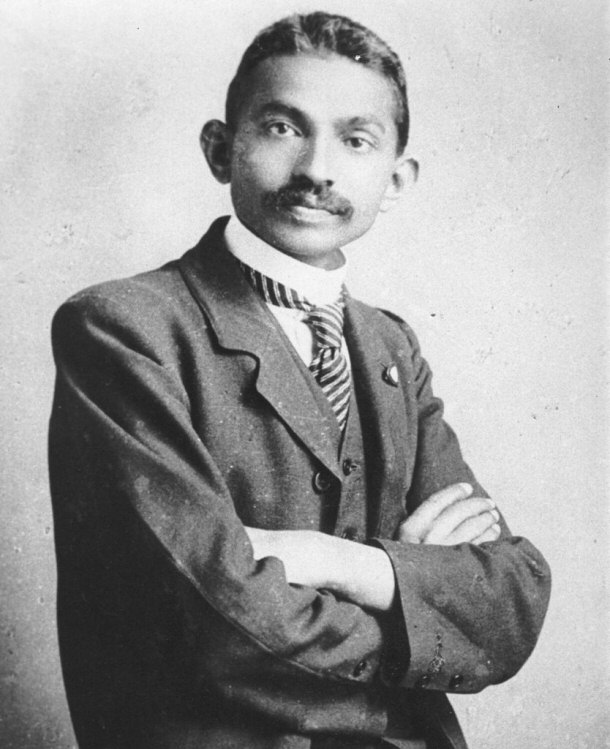
Gandhi started working tirelessly to protect the civil rights of the Indians
living in South Africa. It was at this time that Gandhi started his use of the
concept “satyagraha”, which is Indian for “firmness in truth”.
Gandhi with Stretcher-bearers of the Indian Ambulance Group
During Boer War
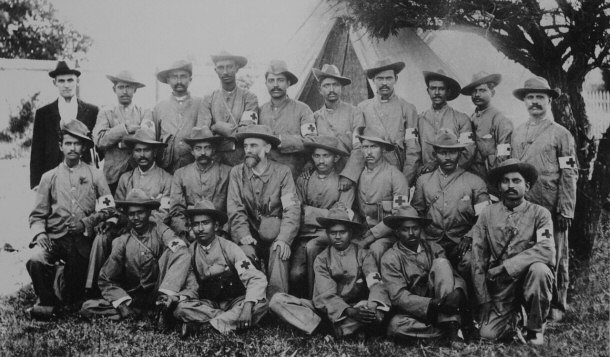
It also is known
as nonviolent resistance, and is the same concept that was later used by civil
rights activists like Martin Luther King Jr. during the civil rights movement in
the U.S.
Gandhi with the Leaders of the Non-violent Resistance
Movement in South Africa
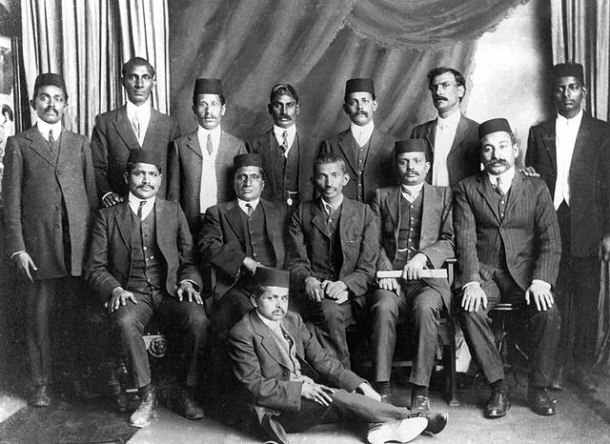
It was not until 1914 that Gandhi returned to India where he would become the voice
of the civil rights movement, and started working for independence for his homeland
from English imperialistic rule. It appears that what Gandhi learned in South
Africa proved to be effective, because it soon garnered a huge following of
like-minded activists searching for peace and unity that would ultimately win
India its independence.
10) Gandhi Was Married at Thirteen
At the age of seven, Gandhi was already engaged to Kasturba Makanji. Gandhi’s
marriage was arranged on account that his father was the chief minister
for small states in Western India, and it was customary for families of power to
arrange marriages for their children. This powerful position meant he had to find a
suitable bride for his son. The bride Gandhi's father chose was Kasturba, who was the daughter of a
wealthy
merchant family and a proper match in the eyes of his father. The two were ultimately married when they reached the age of 13.
Mohandas and Kasturba Gandhi in 1902
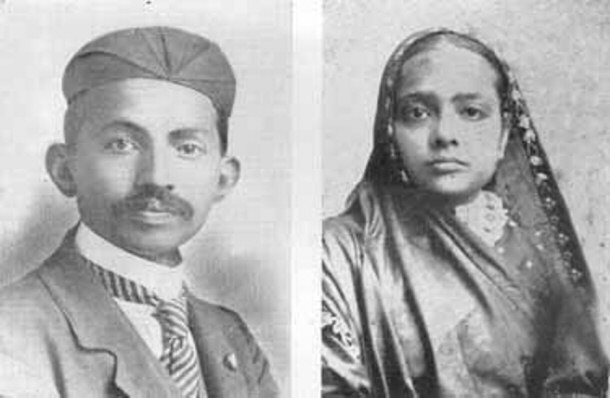
The two were highly devoted to one another and ended up having four sons
together. The couple remained together until Kasturba died at the age of 74 in
1944. After her death she was interned at the Aga Khan Palace. The palace was located in
what is now known as Pune, India. This
location was chosen by Gandhi's family due to their political activism starting
in the year of 1942 and the significance of the location.
Aga Khan Palace
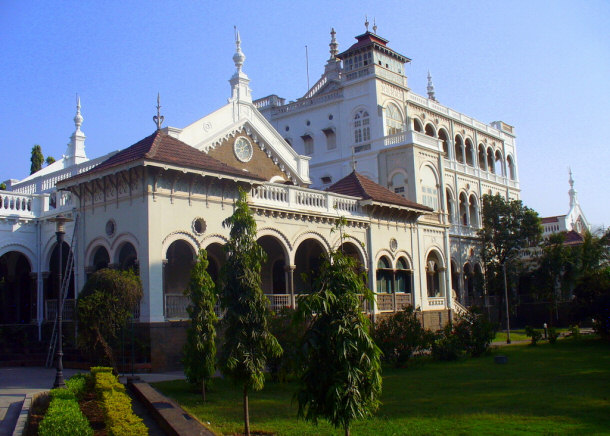
By //www.djoh.net,
via Wikimedia Commons
The couple even remained married after Gandhi decided to take a vow of
celibacy, further demonstrating their commitment to one another. The vow was to demonstrate his commitment to public service,
self-discipline, and spirituality as a great leader. He took the vow in 1906 and his wife stayed
by his side without question, supporting him until the day she died.
Kasturba's Gravesite at Aga Khan Palace
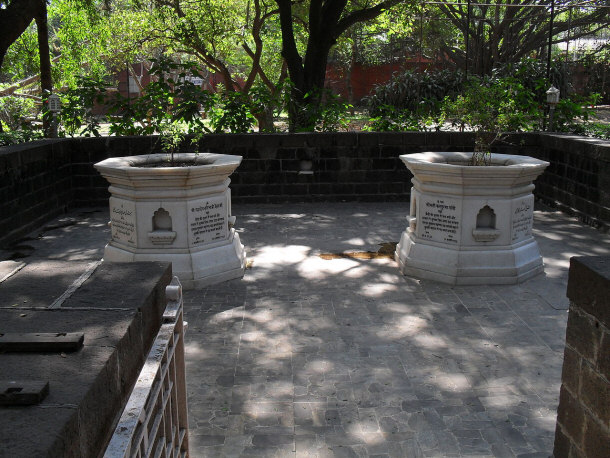
By Tatiraju.rishabh
via Wikimedia Commons
9) Unexpected Tie between Gandhi and Mother Teresa
When thinking about peaceful figures in the history of the world, often Mother
Teresa comes to mind just as often as Gandhi's name typically does. It is surprising to learn there is actually another
connection between these two massively spiritual leaders. When a historic figure dies, it is customary to
parade the casket for the public to see and to mourn the loss of such an
influential figure in a funeral procession. In the case of Gandhi, a caisson was used to pull the casket
throughout the city. A caisson is another name for a two-wheeled cart that is
typically used to carry ammunition during war, and is very similar to the
apparatus that was used in Franklin Delano Roosevelt's funeral procession as
well as John Fitzgerald Kennedy's.
Funeral Procession for Gandhi Passing India Gate, Delhi
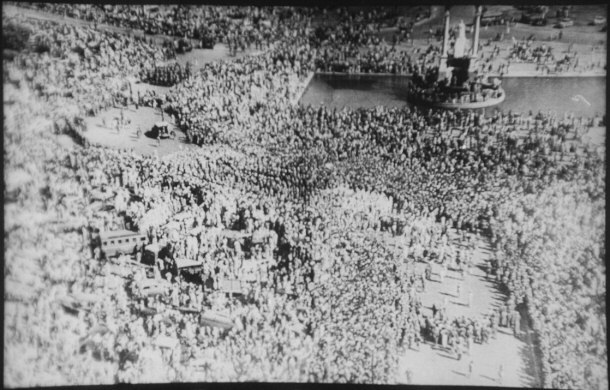
The caisson used in Gandhi's funeral was really nothing more than a gun carriage normally used to
carry guns from one location to another. It seems like a rather ironic way to
transport the body of such a peaceful individual, but even stranger when you
consider the same caisson was used to carry the body of Mother Teresa after her
death.
Caisson Used in U.S. Military Burial
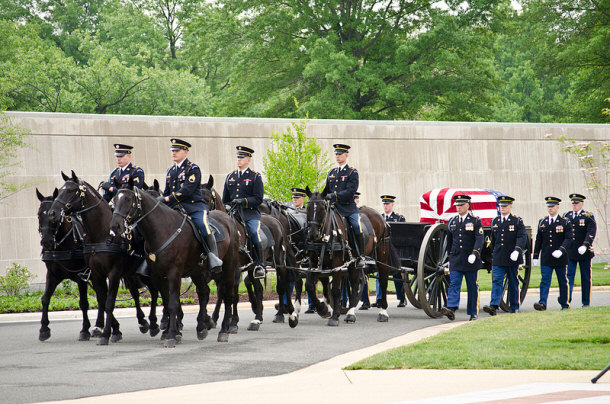
It is unknown what has happened to the caisson that was incidentally used in
both funeral processions. It would be interesting to find out if this particular
caisson is being saved by someone out in the world for use for any other
historic peaceful figure's funeral procession in the future.
8) Known for Being Punctual
 One
of the things those close to Gandhi state about his character is that he was an
extremely punctual individual throughout his life. Even though Gandhi had rid himself of
worldly possessions, he maintained possession of a pocket watch that only cost a
dollar for the entirety of his life. This
watch was used regularly to make sure he was on time to whatever engagements he
had to be at. It is thought this was something that was either instilled in him
by his father or something he learned during his time as a lawyer, and many
agree that both had a great deal to do with his extremely punctual nature. One
of the things those close to Gandhi state about his character is that he was an
extremely punctual individual throughout his life. Even though Gandhi had rid himself of
worldly possessions, he maintained possession of a pocket watch that only cost a
dollar for the entirety of his life. This
watch was used regularly to make sure he was on time to whatever engagements he
had to be at. It is thought this was something that was either instilled in him
by his father or something he learned during his time as a lawyer, and many
agree that both had a great deal to do with his extremely punctual nature.
Regardless of where he got his sense of punctuality from, there is no denying
the interesting fact that Gandhi was actually ten minutes late to a
prayer meeting the day of his assassination. Perhaps, if he had been on time, he
might still be alive today. What is known is that Gandhi exhibited rare signs of
being upset on the day he was killed, just because he was frustrated at his
tardiness.
Gandhi Spinning Yarn - A Testimony to How Simple His Life
Was
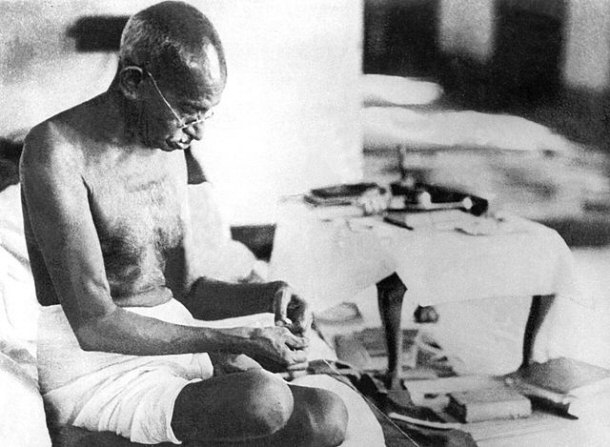
The pocket watch was sold recently along with personal plans and other meager
possessions Gandhi possessed at the time of his death. While the sale of these
items for over $2 million probably would not of sat well with Gandhi had he been
alive today, it is still a sign of just how important people find him as a
historical figure.
|
Young India- Other Tool Used by
Gandhi:
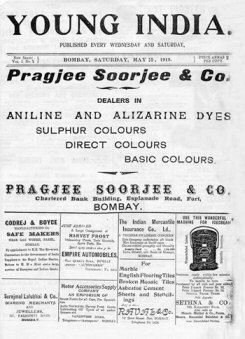
|
7) Fumbled First American Radio Broadcast
At the time Gandhi was working toward the independence of India, the radio
was the main form of political communication. World news and entertainment were
broadcasted over the radio because television had not become as popular as it is
today as a form of mass communication. Because of this, Gandhi was set to
perform his first radio speech to America via an English sound studio. Even
though he would go through several addresses during the years following his
first broadcast, it was his first public address he had ever conducted. Gandhi
was understandably nervous about how his words would be received by the public.
Another form of political communication was a weekly journal published by Gandhi
called Young India.
Unfortunately for Gandhi and his ignorance of how broadcast radio worked, his
first words of the speech he fumbled poorly. Gandhi did not know that the
microphone was already broadcasting his speech and Gandhi was accidentally
recorded as saying, “Do I have to speak into this thing?” His voice was
immediately broadcasted to the United States and unfortunately he initially came
across as quite naive to the listening public.
Gandhi's First Falter Did not Stop Him from Achieving
Intense Popularity in America - Graffiti in San Francisco

By Victorgrigas
via Wikimedia Commons
While it is likely that this was slightly embarrassing for Gandhi, he was
able to overcome the fumble quickly enough to save his entire broadcast. Soon,
Gandhi found his footing and spoke from a position of relative comfort in
relation to his rocky start. As mentioned above, he would go on to broadcast
over the radio many more times at home and abroad, most likely becoming much
better at delivering radio broadcasts.
6) Corresponded with Leo Tolstoy
Gandhi had many influences over the years that shaped his thinking. Among these is Leo
Tolstoy's, "The Kingdom of God Is Within You". It was Tolstoy’s belief in
nonviolent resistance that helped influence Gandhi to become a nonviolent leader
in the face of social unrest. It was also due to Gandhi reading this book that
inspired correspondence between the two men. Tolstoy’s belief was that it was
the responsibility of the individual to denounce aristocracy as a burden. While
anarchy might not have been an ideal Gandhi shared with Tolstoy, the idea of
abstinence, chastity and opposition to private property resonated heavily with
Gandhi.
Leo Tolstoy in 1897

Most of the letters dealt with questions from Gandhi to Tolstoy about the
theological applications in respect to nonviolent resistance. In some of the
other letters, Gandhi speaks about Tolstoy’s health and wishes him well and a
speedy recovery.
Gandhi Fasting and Spinning Yarn
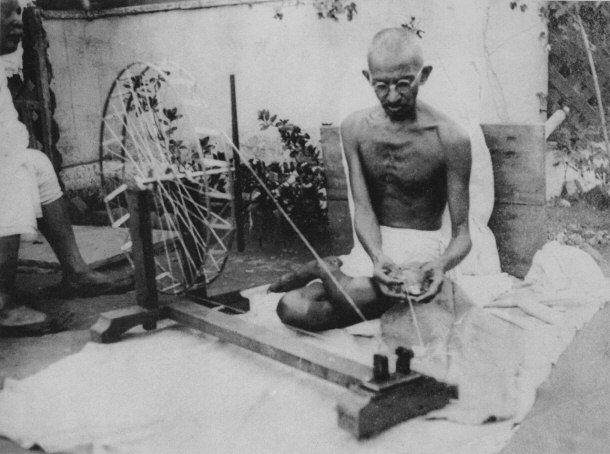
The period of communication between the two was brief, with
only a 13 month period of time between the start of their communication in
October of 1909 and the closing of it in November of 1910. One letter written to an Indian newspaper
titled “A Letter to a Hindu” was a direct result of this stimulating
intellectual correspondence.
5) Brought Copy of Civil Disobedience to Round Table
In 1931, Gandhi was heavily involved in India’s fight for independence from the British government's
rule over the Indian people. And rightfully so, he was welcomed to several Round Table
Conferences. Gandhi was well-known for austere living at all times. It was
shocking to many to see Gandhi bring along a book with him to the second Round
Table Conference. The title of the book was not as shocking as the mere fact
that he brought along reading material and was titled, "Civil
Disobedience," by Henry David Thoreau.
Henry David Thoreau
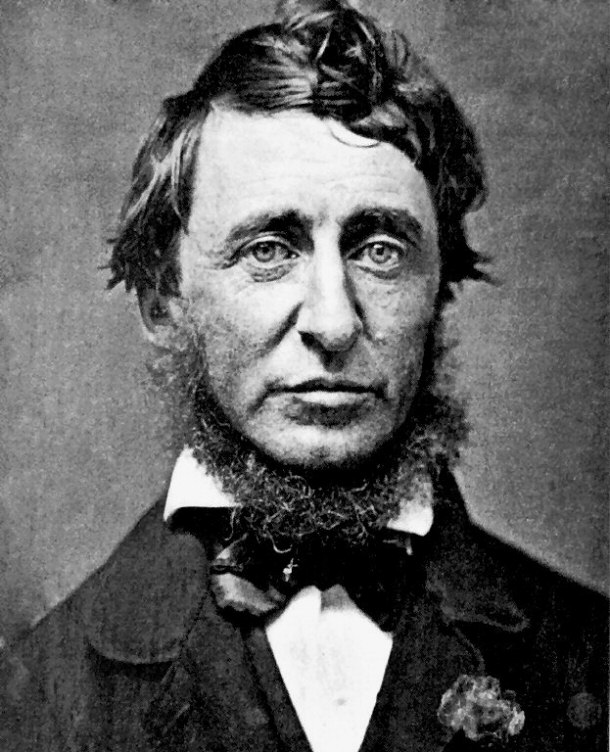
In the book, the American writer talked about the need for individuals within
a society to take responsibility for the actions of their government, and to not
stand idly by as the people of the nation are treated unjustly. It was his
position that any citizen not taking up opposition to governmental tyranny was, in
fact, becoming an agent of injustice as wrong as the government itself. The motivation for the book was
national disgust over slavery that was becoming rampant during the Mexican-American War.
1931 Round Table Conference
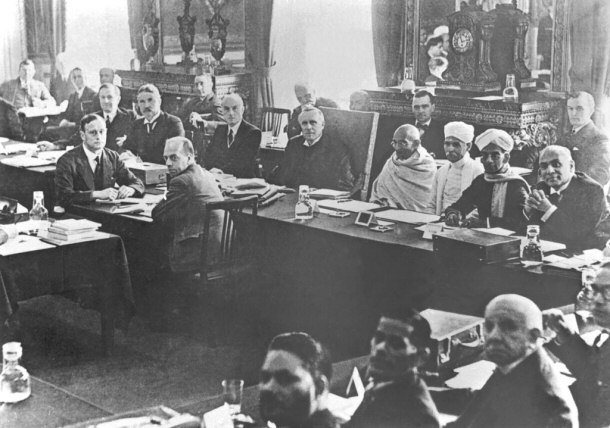
This book seems to have had a profound influence on Gandhi's thinking and
sent a message to the other members of the Round Table Conference as to the
exact position that Gandhi was bringing to the discussion. It was his intent to free
the Indian people from a tyrannous government.
4) Gandhi Liked to Joke
It is understandably hard to think about such a serious thinker as a ‘jokester’,
but Gandhi was far from staunch. Gandhi liked to joke with
those around him in order to bring a smile to the faces of those who might
otherwise be rather challenging to get a smile out of. In one account, Gandhi
was asked how he felt about Western Civilization. His response was delivered
lightheartedly and he said that he felt it would be a good idea to have civilization in the west.
Gandhi Cracking a Smile
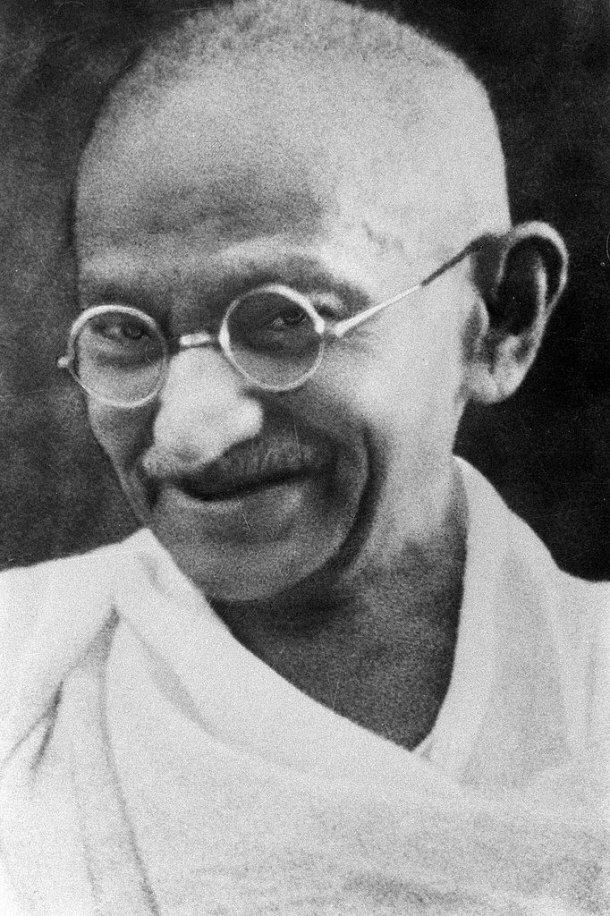
This is surprising coming from the same person who is quoted as saying, “The
greatness of a nation and its moral progress can be judged by the way its
animals are treated.” It may be surprising for some to understand the drastic
change from his seriousness to almost joke-like tone, but knowing Gandhi's
personality, it all makes sense. He wanted to put everyone at ease when working
through something extremely difficult, especially at events such as Round Table
discussions or the debate of the separation of Pakistan and India.
Gandhi and the Next Prime Minister of India Nehru in 1946
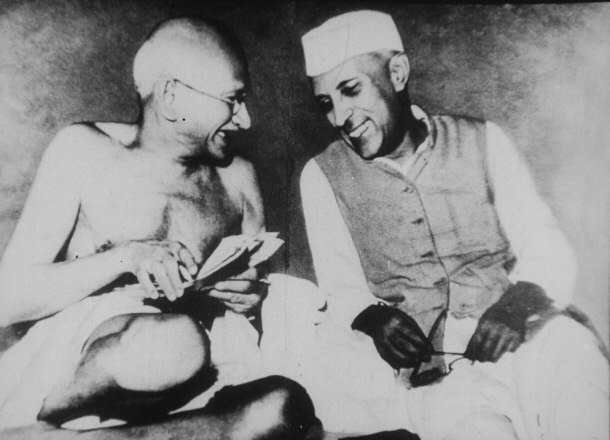
The last thing Gandhi desired was to create tension where no further tension
could probably be handled.
He took great steps to make sure those around him were as comfortable as
possible, while going about the extremely difficult and strenuous process of
freeing the Indian people.
3) Gandhi Went to School While Jack the Ripper Terrorized London
One of the most peaceful men of all time just happened to be going to school
in London at the same time that Jack the Tipper was making headlines all
throughout the British press. Gandhi went to school in 1888 while Jack the Ripper was going
around London killing one prostitute after another. There is nothing recorded
stating what his feelings on the terrorizing situation were, but the murders are
sure to have had some
influence on his attitude toward violence.
Published Wanted Poster for the Killer Known as Jack the
Ripper
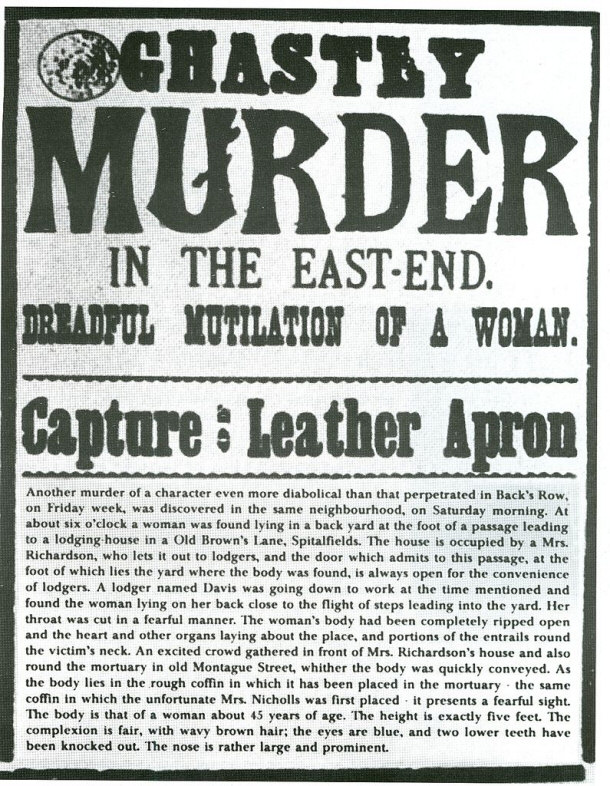
Gandhi spent most of his time at college either in the classroom or studying.
It is unlikely that the historical figure was ever even close to any sections of
London in which Jack the Ripper might have been doing his dirty work. Even at
that time, Gandhi had more important matters to attend to than keeping up with
the actions of a killer.
Jack the Ripper was never actually caught and the murder remains an unsolved
mystery to this day. It is odd that someone who killed so many people was able
to get away with it. Normally someone will have seen something or reported
something that would lead to knowing the identity of the killer. This led to
many believing that the culprit may have been an English Lord or some other
person of high social esteem.
2) Gandhi Was a Big Walker
Walking had always been a big part of Gandhi’s
life. Even while in school, he preferred to walk long distances rather than get
involved in organized sports. It was his belief that walking was the best
exercise, and credited it to remaining in great health even in the later years
of his life.
To wit, Gandhi was able to easily walk the 241 miles of the Salt March of 1930.
He was 60 years old when he walked from his ashram to Dandi and the sea.
Gandhi During the Salt March

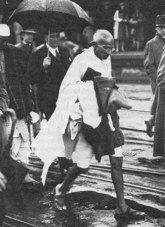 While living in London, Gandhi was able to save money as a result of
choosing walking as his preferred means of transportation. He would walk eight
to ten miles a day, and claimed it was the only thing that was maintaining his health while living in
a foreign land. Walking became a big part of any conversation those around
Gandhi would have. They would walk and talk when they were not sitting and enjoying tea together. While living in London, Gandhi was able to save money as a result of
choosing walking as his preferred means of transportation. He would walk eight
to ten miles a day, and claimed it was the only thing that was maintaining his health while living in
a foreign land. Walking became a big part of any conversation those around
Gandhi would have. They would walk and talk when they were not sitting and enjoying tea together.
Gandhi’s love of walking is associated in the minds of many as marching
symbolically as a form of protesting. Before Gandhi, the idea of marching as a
form of political dissent was fairly unheard of but would later be employed by
the NAACP and Martin Luther King Jr.
1) Gandhi Was a Lawyer People Could Respect
When talking about a lawyer, most people do not hold them a very high esteem due
to the nature of their profession. In fact, Gandhi went to school to become a
lawyer and even practiced law in South Africa, but he was never the kind of
lawyer that had the reputation of being shady or a cheat. Gandhi was committed to
bringing about compromise in the cases he tried, instead of the typical tactics
of manipulating the system or the testimonies of key witnesses. He said that this was a result
of his recognition of a lawyer's true role being to bring parties together,
rather than to create further separations and discontent.
It was his belief that it was because of the way he practiced law that he
never compromised his soul. He stated that he never lost because he was able to
create a compromise that both parties could agree upon.
Gandhi in the 1920s
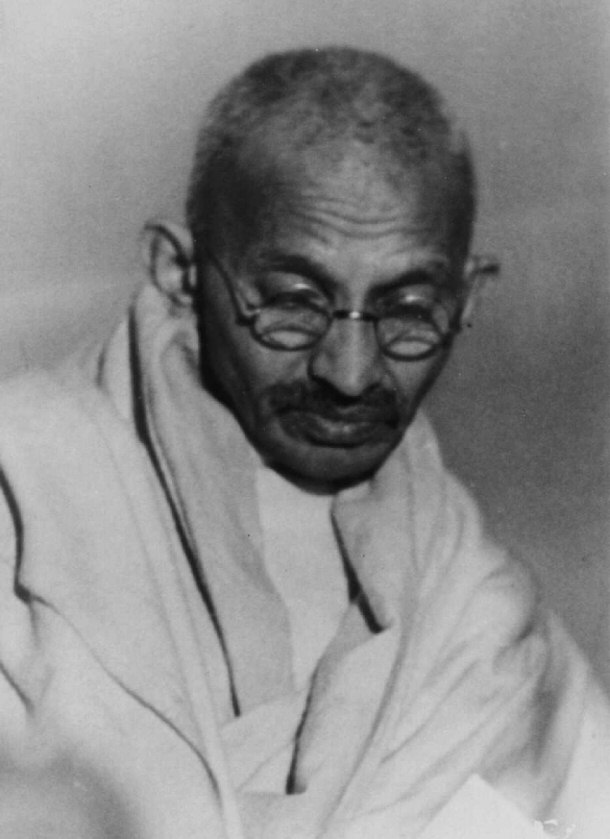
It was this belief of creating compromise that made him so prolific in
activism, as well as when he practiced law. The same principles that applied to tending to legal
matters, helped when dealing with heads of state and mobs of angry religious
followers. He took his role very seriously, and worked hard to bring about change
in the most conscientious and effective manner possible.
Further Investigation of Gandhi
This is only an account of some of the most interesting facts about Gandhi. A
look at the accomplishments of the man allows you to understand even more about
what he was all about. While it is interesting to learn things like Gandhi spoke
English with an Irish accent thanks to learning English from an Irishman, there
is so much more to this pivotal, historic figure. Learn about the people he met with
to try to reach great compromises and the struggles he encountered throughout
his life. You may be astonished to discover some of the intense difficulties he
encountered trying to win India her independence, only to be killed for a misunderstanding of
his intent of only a single phrase he spoke only a single time during a speech
about the separation of Pakistan and India. His memory will live on in the
hearts and minds of people everywhere, especially within the hearts and minds of
the Indian and British people for generations.
Specific People
15 Things You Should Know About Stephen Hawking
15 Fascinating Facts about Michael Jackson
15 Fascinating Facts about Al Capone
15 Interesting Facts about Mother Teresa
15 Interesting Facts about Walt Disney
15 Interesting Facts about George Washington
15 Interesting Facts about Gandhi
15 Interesting Facts about Franklin Roosevelt
15 Interesting Facts about Ben Franklin
Top 15 Interesting Facts about Archimedes
15 Little Known Facts about Martin Luther King
15 Interesting Facts about Ronald Reagan
15 Interesting Facts about Nelson Mandela
15 Interesting Facts About Shakespeare
15 Interesting Facts about Marie Curie
15 Interesting Facts About Julius Caesar
15 Interesting Facts about Leonardo Da Vinci
15 Interesting Facts about Captain James Cook
15 Interesting Facts about John F. Kennedy
15 Interesting Facts About Cleopatra
15 Interesting Facts about Barack Obama
15 Interesting Facts About Albert Einstein
15 Interesting Facts about Adolf Hitler
15 Interesting Facts about Christopher Columbus
15 Interesting Facts About Bill Gates
People Related
15 Most Bizarre Things Purchased by Celebrities
Top 15 Reasons Why People Commit Suicide
25 Individuals Who Thrived with Savant Syndrome
20 Celebrities Who Invented Amazing Things
Top 15 Drugs People Commonly Overdose and Die From
Top 15 Myths about Death
15 Unusual Ways People Have Died
15 Crazy Festivities Around the World
55 Celebrities With Physical Imperfections
15 Funny and Unusual Ways Interviews Have Been Held
15 Weird Ways People Improve Their Confidence
15 Of the Darkest Crime Personalities We Hope to Never Meet
15 People Who Killed for a Living
15 Famous Celebrity Meltdowns
14 Fun Activities That Have Ended Up In Death
15 Facts & Info About Human Trafficking
Shorter Top Lists:
10 Billionaires as Wasteful or Fanciful as They are Wealthy
10 Ruthless Serial Killers Who Were Never Caught
10 Dangerous Serial Killers
Informational:
Detecting Lies: How to Tell Whether or Not Some is Truthful
Cannibalism in History and the Modern World
What Your Favorite Color Reveals About You
What is a Weirdo? Defining Weirdness in Society
Media's Effect on Society
How to Attract Beautiful Women |